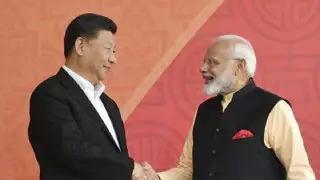
Terror Attacks (Credit: OpenAI )
New Delhi: China operates under a centralised system where the government maintains full control over information and movement. The Ministry of State Security monitors national security and counter-intelligence activities. Their surveillance capabilities are extremely advanced. Anyone entering the country is thoroughly screened, and suspicious behaviour is quickly flagged. Authorities use artificial intelligence and high-tech monitoring tools to track daily movements. This constant watch makes it difficult for any extremist plan to go unnoticed.
China’s cities are covered with millions of CCTV cameras connected to facial recognition systems. These devices can identify a person in seconds and even access their details. The technology helps security forces detect unusual movements rapidly. Social media platforms are also strictly regulated. Content is filtered, and any discussion against the state is immediately removed. With digital control in place, communication among extremist groups is almost impossible.
China’s international borders are heavily guarded and nearly impossible to penetrate. Illegal entries are met with immediate action, either arrest or direct combat response. Security forces, including the People’s Liberation Army, maintain strong vigilance. This strict border control prevents militants from entering the country. Surveillance drones and patrol checkpoints ensure very limited movement without clearance. The control reduces chances of external infiltration.
Pakistan has long faced allegations of supporting extremist groups. However, these same groups rarely target China. Experts say China supports Pakistan on global platforms and often shields its allies from sanctions. In return, extremist organisations maintain a softer stance towards China. This informal understanding reportedly prevents anti-China activities. The relationship gives Beijing a strategic defence layer beyond its borders.
Unlike democratic nations, China imposes strict limitations on public freedom. Protest, criticism and uncontrolled gatherings are difficult. The government monitors public sentiment continuously. Without free media or open opposition, chances of radical ideology spreading are limited. High-speed action against perceived threats discourages possible attackers. Critics argue this reduces individual freedom, but the state views it as necessary for order.
China has passed several anti-terror laws that allow immediate detention without long legal procedures. Harsh penalties discourage involvement in illegal activities. Authorities are known for suppressing dissent early, before it becomes violent. Though human rights bodies often question these methods, China insists they ensure public safety. The approach keeps internal security incidents extremely low.
While some countries admire China’s results, experts warn replicating its system may not be easy. Strict monitoring limits privacy and is often criticised globally. Democracies must balance freedom and security carefully. Still, China’s approach highlights how technology, border control and selective international alliances can reduce threats. The model offers lessons in preparedness even if not fully adoptable worldwide.













Copyright © 2025 Top Indian News
